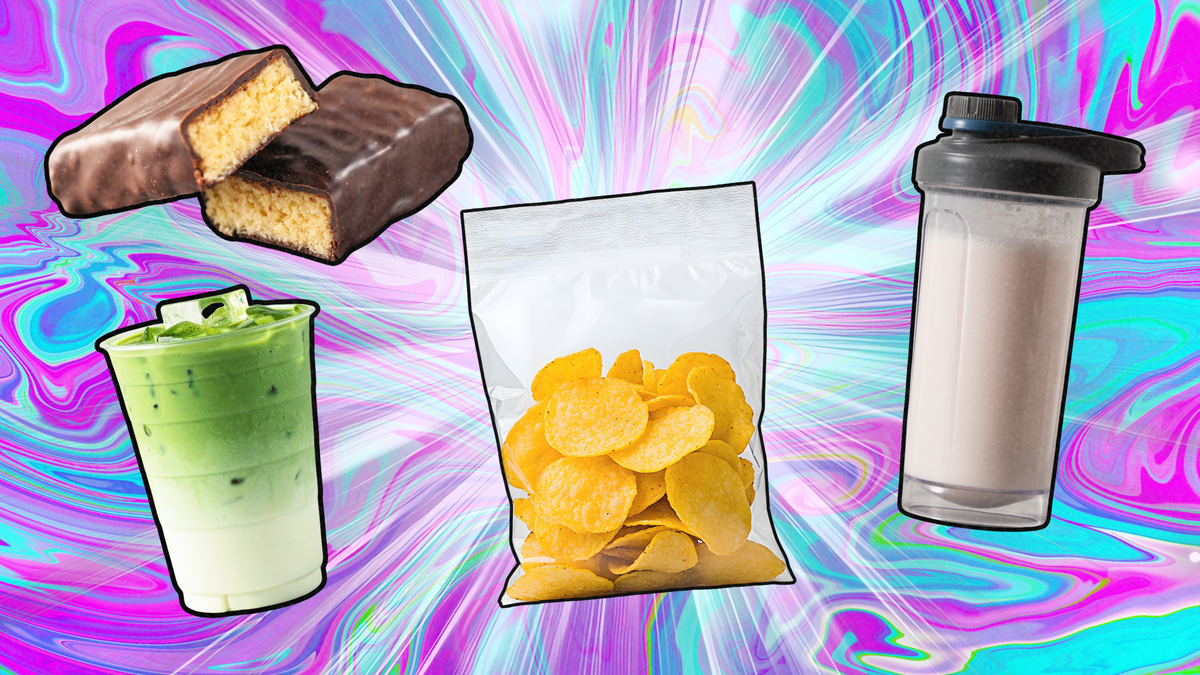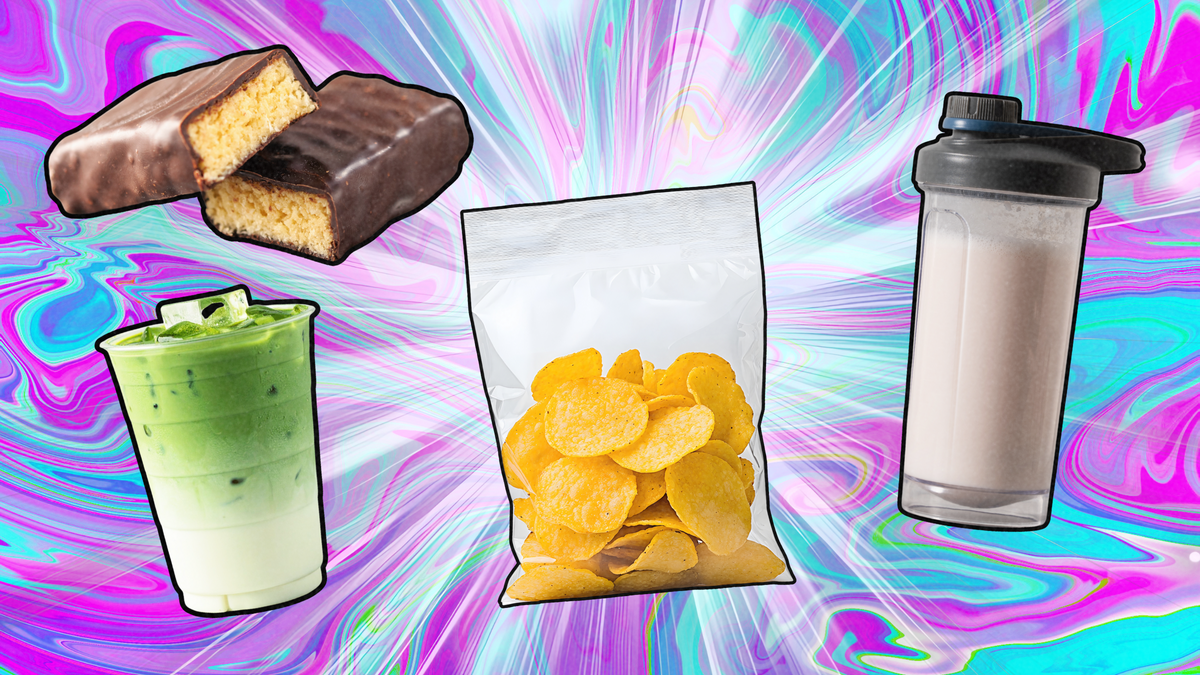
From cereal, chips, popcorn, water, to even your favorite Starbucks latte, protein is being added to virtually everything. Even though protein absolutely deserves a top spot in a well-balanced diet—it’s essential for building and repairing muscle, supporting recovery, and preserving lean mass as we age—but it’s often treated like the whole story. In reality, when it comes to actually powering training performance, adequate carbs, sleep, and a consistent plan are the major contributors.
As a personal trainer, strength and conditioning specialist, and nutrition coach, I eat my fair share of protein and recommend it to clients, but I don’t love paying extra for protein bars or shakes when the consequences of substituting them for balanced meals chip away at performance and diet quality.
The low-carb era made a simple case that protein is ‘good’ and carbohydrates are ‘bad,’ a framing that stuck because it let people eat indulgent foods and still feel virtuous.
With the protein craze taking a firm grasp of social media feeds, fast-food menus, and grocery carts, I think it’s important to examine what people truly need, where fortified products can help in real life, and where they slide into pricey ultra-processed convenience with a health halo.
What’s Driving the Protein Boom?
Though protein-boosted foods are cropping up more now than ever, diets where a single nutrient becomes shorthand for “better choices” have been around since the 1920s, according to advertising and food historian Elizabeth Nelson.
The protein craze really took off in the 1980s thanks to the Atkins Diet, which pushed fat and protein with minimal carbs. The low-carb era made a simple case that protein is “good” and carbohydrates are “bad,” a framing that stuck because it let people eat indulgent foods and still feel virtuous, Nelson explains.
Now, the protein frenzy is part of a bigger trend centering on “wellness” and longevity as ideal goals. In uncertain times, research shows people often gravitate toward health-control behaviors, so focusing on diet and well-being has become a way for many to regain control.
Consuming Too Much Protein Can Backfire
When a single macronutrient becomes the darling of your dinner plate, it can mean tradeoffs—some that are even counterproductive, especially if you’re choosing packaged protein-added foods over whole sources.
Performance Drops When You Cut Carbs to Boost Protein
People seek protein in part because of its performance and recovery-boosting prowess, but there’s a caveat. If protein is prioritized over carbs, performance and recovery will suffer, especially if your preferred activities demand a lot of energy. If you already get adequate protein, pushing above your usual targets or tacking on protein during or post-workout fuel doesn’t improve endurance performance when you’re getting enough carbs; the main benefit of protein during long efforts is reduced muscle damage and soreness.
Active people should focus on getting enough carbs to fuel performance, which looks different depending on goals. “Endurance athletes, like cross-country runners as an example, require a lot more carbs,” says Jeffrey Jackson, a physical therapist, comparing them to athletes like football players, who must maintain more muscle mass, thus require more protein.
Jackson recommends whole-food protein sources, partially because if you’re relying on protein-infused foods to power your training, you can end up depleted. “Most bars and ready-to-drinks will have some carbs, but a lot of them are now more focused on protein at the expense of carbs,” says sports dietitian Jessica Garay, a nutritionist and a sports dietetics specialist. This leaves you feeling depleted ahead of your next workout.
Protein-Fortified Snacks Are Considered Ultra-Processed
It’s more than a bit ironic that the war on processed foods is in full force while protein-added goods are booming. Bars, protein waters, cereals, and many ready-to-drink (RTD) shakes may look sporty and health-focused, but at their core, they’re industrial recipes built from whey isolates (purified whey protein) and additives such as flavorings and sugars for better taste, which makes them ultra-processed foods (UPF).
When active people rely on protein snacks packed with artificial sweeteners, they “feel bloated while training or even must make frequent trips to the bathroom, which impairs performance,” Jackson says. Not exactly training fuel.
How Ultra-Processed Foods Impact Health
The bigger picture here is that higher intake of ultra-processed foods is associated with poor health outcomes. For example, a 2024 review links higher UPF intake with greater risks of cardiovascular disease, coronary heart disease, stroke, type 2 diabetes, and certain cancers. In a 2019 study, adults ate about 500 more calories per day from carbs and fat when offered ultra-processed meals than when offered minimally processed meals, even though the menus were identical in terms of calories, macros, sugar, sodium, and fiber content.
How Much Protein Do You Actually Need?
The recommended daily allowance (RDA) is 0.8 grams of protein per kilogram of body weight, which is a floor set to cover the needs of most healthy adults so they don’t become deficient. So if you weigh 150 pounds, you should aim to get 54 grams of protein each day.
However, most active people and athletes do better in the 1.4 to 2.0 g/kg/day lane (so that same 150 pound person would need to eat roughly 95 to 136 grams of protein each day), especially when training is regular and intense, the higher end is more practical during heavy training or if you’re in an energy deficit—eating fewer calories than you burn during weight loss—according to the International Society of Sports Nutrition (ISSN). Garay suggests splitting protein into 20 to 40 grams per meal, choosing the higher end if you live in a larger body, are older, or have just trained intensely.
As a nutritionist, I keep it simple. I’d rather see you eat yogurt and a sandwich after training than chug protein water (yes, that’s a thing) that shortchanges carbs. But I agree with Garay when she says, “Fed is best. A bar or RTD-protein shake is better than nothing.”
But honestly, there’s no need to jump on this craze. If history holds, and it most definitely will, the pendulum will swing again, and we’ll be onto the next nutrition trend.
Want more Outside health stories? Sign up for the Bodywork newsletter. Ready to push yourself? Enter MapMyRun’s You vs. the Year 2025 running challenge.
The post The Protein Craze Is Seriously Getting Out of Hand appeared first on Outside Online.














